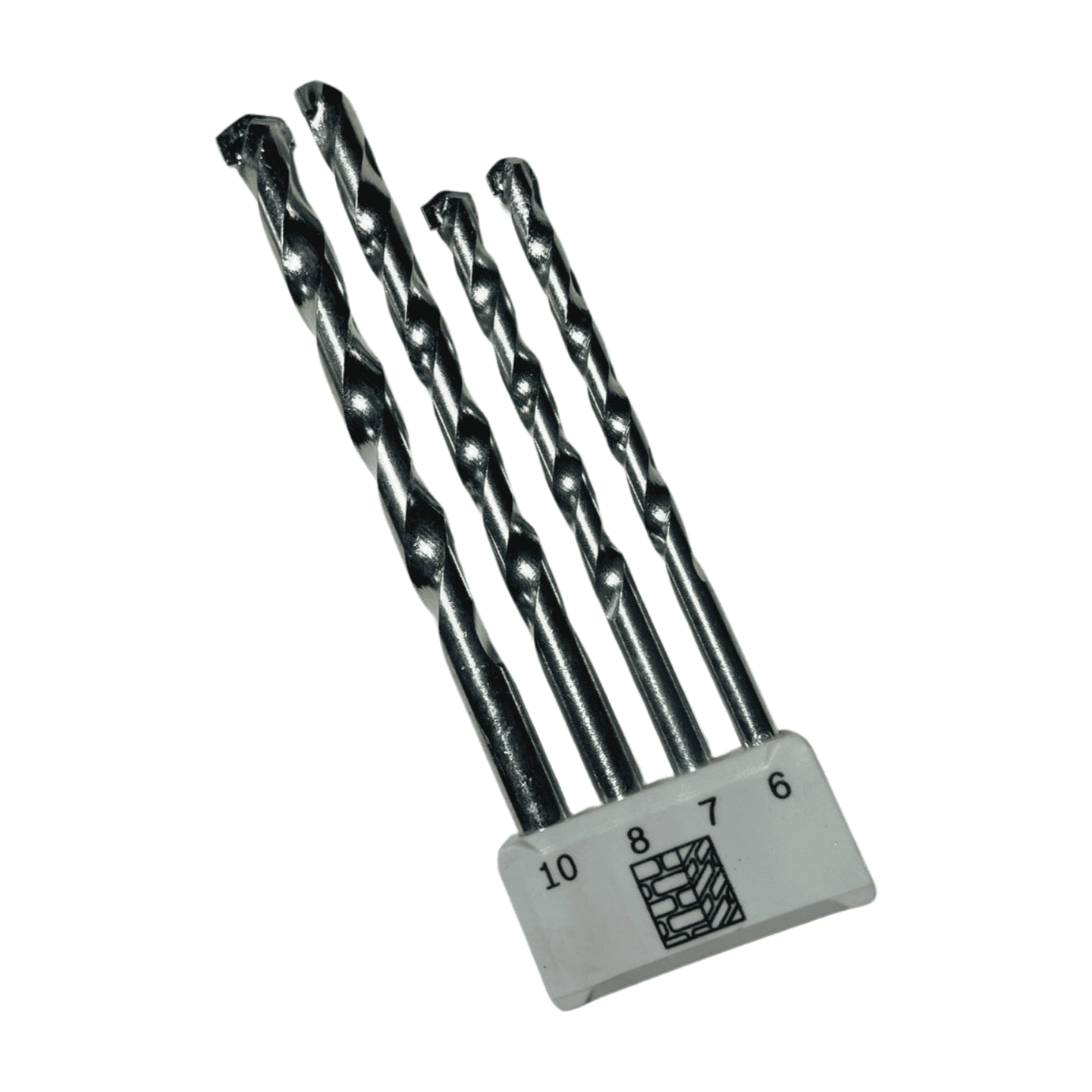The A to Z of Successful Marketing & Selling
Marketing and Selling have changed significantly over the last few years and even more so since Covid. We learn the alphabet as one of our earliest educational activities. In this article we use the alphabet to provide a framework for developing a successful approach to marketing and sales.
A is for ACTION
If you’re not working to meet customer needs, your competitors will be. Marketing and Sales teams should always be actively exploring new and better ways to engage with and understand customers.
Action demands aggregated data that’s comprehensive, integrated and in real time. How can those involved in your marketing and sales better gather customer data and translate this into meaningful insights
B is for BUSINESS INTELLIGENCE
The days of pure gut feeling are over. Today, successful business decisions are built on hard facts crucially gathered on a continuous and dynamic basis. Data and information gathered must be gathered in a way that meets business objectives.
How well does your business gather accurate, timely and extensive business intelligence?
C is for CUSTOMERS
Look deeper into your customers to find out valuable marketing and sales information. An approach is to conduct a 6L Customer Analysis and establish the characteristics
- Loyal customers – those who are advocates for your business and choose to purchase from you regardless of what the competition offer or do
- Live customers – why have they chosen to purchase from you ( the real reasons)
- Losing customers – those who have purchased products or services from you previously. They need to purchase again but are actively looking at other manufacturers / suppliers. Why are they choosing to do this, bearing in mind they have previously experienced you
- Lapsed customers – those who purchased previously but haven’t repurchased. They are still in business, still have a requirement but haven’t made a decision to procure
- Lost customers – those who will never buy from you again. Why is this the case
- Likely customers – we can call them prospects / enquiries. What are the profiles of customers who are most likely to purchase? Creating ideal buyer personas is a critical activity to allow targeting.

D is for DIFFERENTIATION
A great question to help consider the issue of differentiation is “Why should I buy from you?”
Saying that you make “A quality product” isn’t a point of differentiation – buyers expect quality
Promoting yourself as being the “cheapest” isn’t a long term strategy for profitable growth.
As a business you need to establish what’s of importance and value to your customers. Then establish how well your competitors meet these needs. Finally you need to identify what it is that your product / service offers the customer, that the customer values and importantly the competition don’t meet. These become your points of differentiation.
Where you have points of differentiation, you have the opportunity to increase / differentiate pricing compared to the competition.
E is for EVENT TRIGGERS
In sales timing is everything. As prospects will be at different stages of their purchasing process, you need to act appropriately.
Those who are at the early stages will need information about the subject matter, hints and tips, reports. Case studies that showcase how others (companies / people like them ) have benefited since using the product / service. Therefore its important to capture the details of these people who are searching for information. That way you can provide them with information and help them on their selection and purchasing journey.
Someone who has looked at all the options and is now ready to purchase needs different event triggers and approaches. How easy is it for them to get a detailed and professional looking proposal. How easy is it for them to speak to a technical and knowledgeable person. What is the process like for opening an account.
Within your business think about how you interreact with customers at different stages of their purchasing journey
Want to pick up the phone and speak to us about your Website project?
Call us on: 01733 361729 mail: solutions@bdolphin.co.uk
F is for FOCUS
Make every opportunity count
Ensure that your sales team have the power to focus on the hottest most profitable prospects.
Make sure that existing customers are managed. There is no point in spending huge amounts of time and effort to go through the customer acquisition process. Only to lose them over time through poor marketing and sales management.
This is where marketing and sales systems and processes come into play. How robust are your systems?
G is for GROWTH
Sales bring growth, so you need to give those involved in sales every available advantage.
Part of your marketing and sales strategy will include information on the company growth strategy.
What does growth mean within your business? It might seem a simple point, but many businesses struggle to establish what level of growth they are looking for?
- When planning does your growth plan go along the lines “grow XX %”
- Where / How does profit fit into the growth plan
- How many new customers will be needed to achieve the desired growth
- Could you achieve the growth by selling more to existing customers
- What level of capacity are you currently operating at? If you get more sales how will this impact on the business operation
H is for HELP
How can you help your prospects
What information can you provide to them that will help them during their search.
Where and when do you need to provide this information
What search terms are prospective purchasers using in their investigations
How can you help your customers
What help can you provide to them that will reinforce their desire to continue purchasing from you.
How can you provide this information so it has maximum impact
What are the pains that these existing customers are facing, where they would value some help.

I is for INSIGHT
Data – is important. Many companies are inadvertently inundated with huge quantities of data. Unfortunately some others have no methods in place for capturing any data. Do you have the situation where the business creates spreadsheets or logs data without ever analysing it
Information – is the next stage where we analyse the data, and convert it to useful information. This information can be used by management to inform decisions
Knowledge is the crucial element that fuels good marketing decisions. Having data, converting to information and through discussion and understanding gaining knowledge. A successful business will gather knowledge from all functional areas
- What insights do staff who visit customers gain
- Do accounts gather insights when talking to customers
- Front line staff who take inbound calls, how do they capture knowledge insights
J is for JUDGEMENT
Modern commerce is all about making the right decisions at the right time.
Making “Judgement Calls” is part of business. Procrastination is the issue many companies face, where through insufficient knowledge they avoid making decisions.
The challenge is, how much and what additional knowledge would allow you to make a judgement call.
This applies to both internal and external business decisions.
Do you find yourself delaying decisions, if this is the case how can you gather more data / information this in a timely manner.
K is for KEYWORD RESEARCH
Keyword research of what prospective buyers are searching for is very powerful. Having detailed knowledge of
- What words and phrases customers are using when searching
- The subtle variations of terminology in search
- How competitive it will be to rank for organic search terms
- The search intent for various keywords are people looking for information or to purchase
- Trends in search terms and volumes
Combining detailed Keyword Research with Google Analytics allows you to capitalise and focus activities on the correct organic activities
L is for LIFETIME VALUE
Customer Lifetime Value is the principle of looking at the potential value of a customer over their lifetime. This is an important principle as it has an impact on pricing. For example lets consider the approach of some printer manufacturers. They sell the initial printer at a cost well below manufacturing cost.
The consumer then purchases ink cartridges on an ongoing basis (at a premium price) as they can only buy from the manufacturer. Working on the basis that a consumer will use the printer a certain amount (and hence use and replace the ink). Over a number of transactions the printer manufacturer will move from loss to profit.
M is for MARKETING
Marketing is not just advertising, promotion or social media.
Marketing is to important to be left to a part time activity or someone without professional marketing qualifications or experience.
Marketing should start with a well developed marketing strategy. This should then lead to the development of a Marketing & Sales Action Plan. This integrates marketing and sales objectives and provides a clear framework for how the two will integrate.
Marketing is all about the “customer”, segmentation, targeting, positioning, differentiation and then the marketing “stuff” that you will need to complete. These are the activities that will create awareness, cause interest, help the customer make a decision and then take action.
N is for NETWORKS
Structured networking is a crucial activity. Its no good getting involved with a specialist group that have no interest in the products or services that you provide
Networking could be as simple as joining the industry trade association ( though at that point you might find you are simple networking with competitors – never a bad thing). If the products or services you provide are purchased at a local level i.e. Self Storage Units then networking with local businesses could be appropriate.
When selling specialist products i.e. high tip buckets networking with the types of people who purchase is relevant i.e. agricultural buyers
Some simple rules of networking, listen, inform don’t sell, be consistent and proactive, follow up and have strategies in place for keeping in contact with regular communication
O is for OPPORTUNITY
Marketing and Sales needs to be a science, not an art.
If as a business you have a finite manufacturing capacity, then you want to be progressing the opportunities that sit in your sweet spot. The prospects who are most likely to buy your products imminently.
Now we know that many high value, asset based purchasing decisions have a long gestation period. So its importance to be able to track that a prospect is moving along the customer pipeline. Having too many prospects in the pipeline who are at the early stage may be very resource intensive. Inhibiting your potential to action “hot, high value” prospects.
Review your sales and marketing and evaluate how easy it is to identify and manage opportunities
P is for PRICING
Correct pricing is critical for a business to be profitable
- Price too low and you risk being a very busy fool
- Price too high ( without being able to justify the value) and you face the challenge of not being seen as competitive
- Now some “brands” their very ethos is being seen as the most expensive think of Gucci, Bentley, Rolex
- Many companies still operate a cost plus pricing approach, which whilst being simple may mean that profit opportunities are being lost
- Pricing based on detailed understanding what the customer “values” may mean that you can charge more, without losing sales
Are there opportunities to evaluate, increase and change your approaches to pricing
Q is for QUOTATIONS
How professional are your proposals or quotations.
From and enquiry and request to quote how long does it take you to develop a fully costed quotation.
How simple is the process of creating a proposal. Is everyone an individually crafted document or are they standardised documents
What could you do improve the impact and memorability of your quotations, so they create a WOW impression.
Do your proposals match the quality of the product you manufacture or the service you provide.
Put yourself into your customers shoes and review one of your proposals and see if you would make a purchasing decision based on the document.
R is for RAPID
When you get an inbound sales call how rapidly do you respond. How quickly can you gather sufficient information in order to prioritize the enquiry.
What is your delivery time. Does your lead time lose you sales ( or potentially make you sales). For example we worked with a furniture manufacturer who would always quote 16 to 20 weeks delivery even though they could put it through the factory in 2 weeks. From their research they identified customers “valued” the fact that the item supposedly couldn’t be supplied quickly !!
S is for STRATEGY
For effective marketing and sales you must have a clear strategy and action plan in place. The strategy should include the following key elements
- An evaluation of where is the business currently – this could include a SWOT analysis
- Defining your target markets and ideal customer profile
- Competitor analysis – based on direct, indirect and future competitors
- Establishing your points of differentiation, where you add value and USP’s
- Developing your Marketing and Sales Action Plan

T is for TUNING
Your marketing and sales performance can always be improved and you should be constantly reviewing where improvements can ne made. For example your website needs constant fettling to optimise both search and conversion optimisation
Having clear marketing and sales metrics in place will give you a great steer as to where tuning will have maximum benefits
U is for UNKNOWN
As they say “You don’t know what you don’t know”. Marketing and sales are developing so quickly that what you thought was right approach, may well not be the best option.
Having an open mind, being proactive, talking to customers and taking on board professional marketing advice are great tactics to reduce the unknown.
V is for VELOCITY
Speed of response is critical
- If you have a live chat on your website, it should genuinely be a live chat. An online enquiry should be answered in minutes ( if its hours or days – live chat probably isn’t the right approach)
- What would be the impact if you could visit a prospect quicker. Turn a quotation around faster, respond to an online enquiry
- That “new” product you have been developing for the last number of years. What if you could get “new” products to customers earlier for evaluation
- Would being paid faster by customers have a positive impact to your business
Where in your business could you improve the speed in which you operate to the benefit of a customer?
W is for WEBSITE
In marketing and selling a great website is a fundamental requirement
- Is your existing website losing you sales – do you monitor the analytics and performance
- When was the last time you added new content or updated your site
- Is your WordPress website safe and secure
- How do you go about creating great web pages
- For more information on web design
X is for maXimising
If you have limited budget or time maximising is a sensible way to get more from your activities. For example if you are creating high quality, technically comprehensive content for your website. Think about splitting a large article into smaller segments that can be used on social media. Or a larger video could be repurposed into a number of smaller How To videos
Y is for YOUR CUSTOMER
In all marketing and sales “strategy” discussions “Your Customer” should always command a seat at the table. Amazon gained a reputation for actually having a seat in the boardroom reserved for “the customer” so that you never lose site on who you are serving
Remember – without customers you have no business
Z is for ZZZZZ
Innovation and creativity are critical for business if they want to differentiate themselves from competitors, and develop solutions for customers.
The challenge is making time for innovation and creativity. For this reason many find they come up with ideas and unique thoughts when they are relaxed. Have you noticed that you sometimes come up with ideas while showering or while asleep. Or suddenly while you are relaxed you find the answer to a problem you couldn’t solve while in the working environment.
The A to Z of Successful Marketing & Selling
It will be interesting to see how the A to Z of marketing and selling terms changes over the next 12 months. A recent Martech presentation showed that the number of marketing tools available has doubled over the last 10 years.





